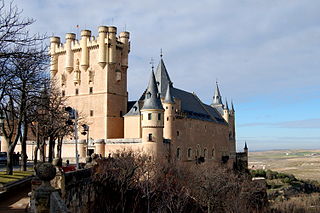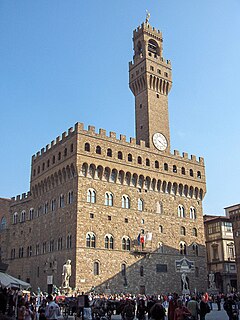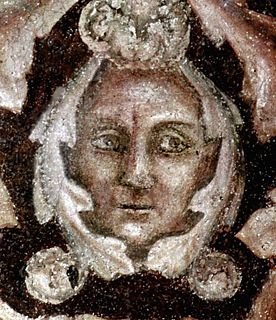
The Republic of Florence, also known as the Florentine Republic, was a medieval and early modern state that was centered on the Italian city of Florence in Tuscany. The republic originated in 1115, when the Florentine people rebelled against the Margraviate of Tuscany upon the death of Matilda of Tuscany, a woman who controlled vast territories that included Florence. The Florentines formed a commune in her successors' place. The republic was ruled by a council known as the Signoria of Florence. The signoria was chosen by the gonfaloniere, who was elected every two months by Florentine guild members.
The Guelphs and Ghibellines were factions supporting the Pope and the Holy Roman Emperor, respectively, in the Italian city-states of central and northern Italy. During the 12th and 13th centuries, rivalry between these two parties formed a particularly important aspect of the internal politics of medieval Italy. The struggle for power between the Papacy and the Holy Roman Empire had arisen with the Investiture Controversy, which began in 1075 and ended with the Concordat of Worms in 1122. The division between the Guelphs and Ghibellines in Italy, fuelled by the imperial Great Interregnum, persisted until the 15th century.

Città di Castello is a city and comune in the province of Perugia, in the northern part of the Umbria. It is situated on a slope of the Apennines, on the flood plain along the upper part of the river Tiber. The city is 56 km (35 mi) north of Perugia and 104 km (65 mi) south of Cesena on the motorway SS 3 bis. It is connected by the SS 73 with Arezzo and the A1 highway, situated 38 km (23 mi) west. Città di Castello has an exclave named Monte Ruperto within Marche.

The province of Arezzo is the easternmost province in the Tuscany region of central Italy. Its capital is the city of Arezzo. The province is bordered by the regions of Marche, Emilia-Romagna, Umbria, and the provinces Siena and Florence of Tuscany. It has an area of 3,233 square kilometres (1,248 sq mi), a total population of about 344,000 in 36 comuni

Empoli is a town and comune in the Metropolitan City of Florence, Tuscany, Italy, about 20 kilometres (12 mi) southwest of Florence, to the south of the Arno in a plain formed by the river. The plain has been usable for agriculture since Roman times. The commune's territory becomes hilly as it departs from the river. Empoli is on the main railway line from Florence to Pisa, and is the point of divergence of a line to Siena. Empoli has an enduring tradition as an agricultural centre. It has given its name to a local variety of artichoke.

The Battle of Montaperti was fought on 4 September 1260 between Florence and Siena in Tuscany as part of the conflict between the Guelphs and Ghibellines. The Florentines were routed. It was the bloodiest battle fought in Medieval Italy, with more than 10,000 fatalities. An act of treachery during the battle is recorded by Dante Alighieri in the Inferno section of the Divine Comedy.
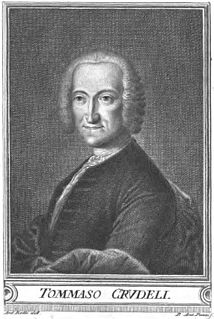
Tommaso Baldasarre Crudeli was a Florentine free thinker who was imprisoned by the Roman Inquisition. He was a poet, lawyer, champion of free thought and is remembered as the first martyr of Universal Freemasonry.
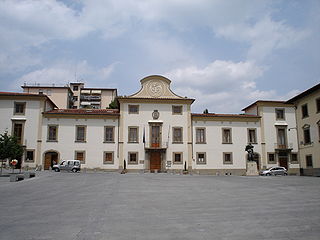
Pontassieve is a comune (municipality) in the Metropolitan City of Florence in the Italian region Tuscany, located about 14 kilometres (9 mi) east of Florence, nearby Fiesole, at the confluence of the Arno and Sieve rivers.
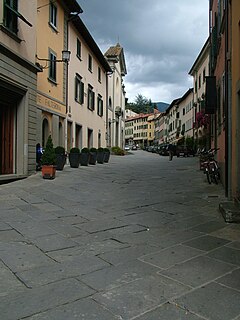
Stia is a frazione of the comune of Pratovecchio Stia in the Province of Arezzo in the Italian region Tuscany, located about 40 kilometres (25 mi) east of Florence and about 40 kilometres (25 mi) northwest of Arezzo. It was an independent commune until it was merged to Pratovecchio in 2014.

The Florentine banking family of the Cerchi, minor nobles of the Valdarno, with a seat especially at Acone near Pontassieve, settled in Florence in the early thirteenth century and increased their fortunes. The family became the heads of a consortium of the prominent Guelfs that securely controlled Florence after the battle of Benevento in 1266. In Florence, the Cerchi purchased some of the ancient structures in the closely packed inner city formerly belonging to the counts Guidi, cheek-by-jowl with the proud Florentine family of the Donati, with whom their growing mutual antagonism was expressed in violent episodes that polarized Florence within a couple of decades in a virtual civil war that aligned behind two captains, Corso Donati of the Neri Guelf faction— the "Black" Guelfs of the old noble oligarchy— and Vieri de' Cerchi of the Bianchi, the moderate party that represented itself as champions of working people. The resulting violence lasted, with irruptions of tranquility, into the fourteenth century.
Maghinardo Paganiof Susinana was an Italian condottiero and statesman living in the 13th-14th centuries. He was seignior of Faenza and Imola, and attempted unsuccessfully to conquer also Forlì.
Aimery IV was the Viscount of Narbonne, an Italian condottiero and captain. Aimery first entered Italy in the service of Charles I of Anjou, who had been granted the Sicilian crown by Pope Clement IV in 1265. Guiraut Riquier, last of the Occitan troubadours, was employed by Aimery.
Pier Saccone Tarlati di Pietramala (1261–1356) was an Italian condottiero from Pietramala d'Arezzo in the Val d'Arno, a rocca that controlled the mule track between his native town of Arezzo and Anghiari. Pietramala was the seat of the powerful family of the Tarlati, who came to prominence in the strife following Arezzo's decisive defeat at Campaldino (1289) as heads of the Ghibelline "Secchi" faction of Arezzo. Pier Saccone's brother was Guido Tarlati, bishop and signore of Arezzo.

The battle of Colle di Val d'Elsa took place between 16 and 17 June 1269 at Colle di Val d'Elsa between the Ghibelline troops of Siena and the Guelph troops of Charles of Anjou and Florence, represented by fewer than 200 knights commanded by Neri de' Bardi.
An incomplete list of events in 1289 in Italy:
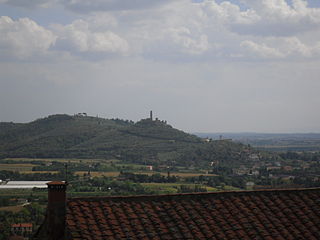
Montecchio Vesponi is a small village part of the municipality of Castiglion Fiorentino, province of Arezzo. Located 4 km south of Castiglion Fiorentino, lies in a hill at the bottom of Chio valley, 364 m above sea level, there resides 1200 inhabitants.

The Battle of Pieve al Toppo was a battle fought between Arezzo and Siena. The two sides engaged in the battle, and Arezzo was able to take the town. Later on in history, Florence would take over the town, and Arezzo was forced to retake it all over again.
The following is a timeline of the history of the city of Arezzo in the Tuscany region of Italy.


